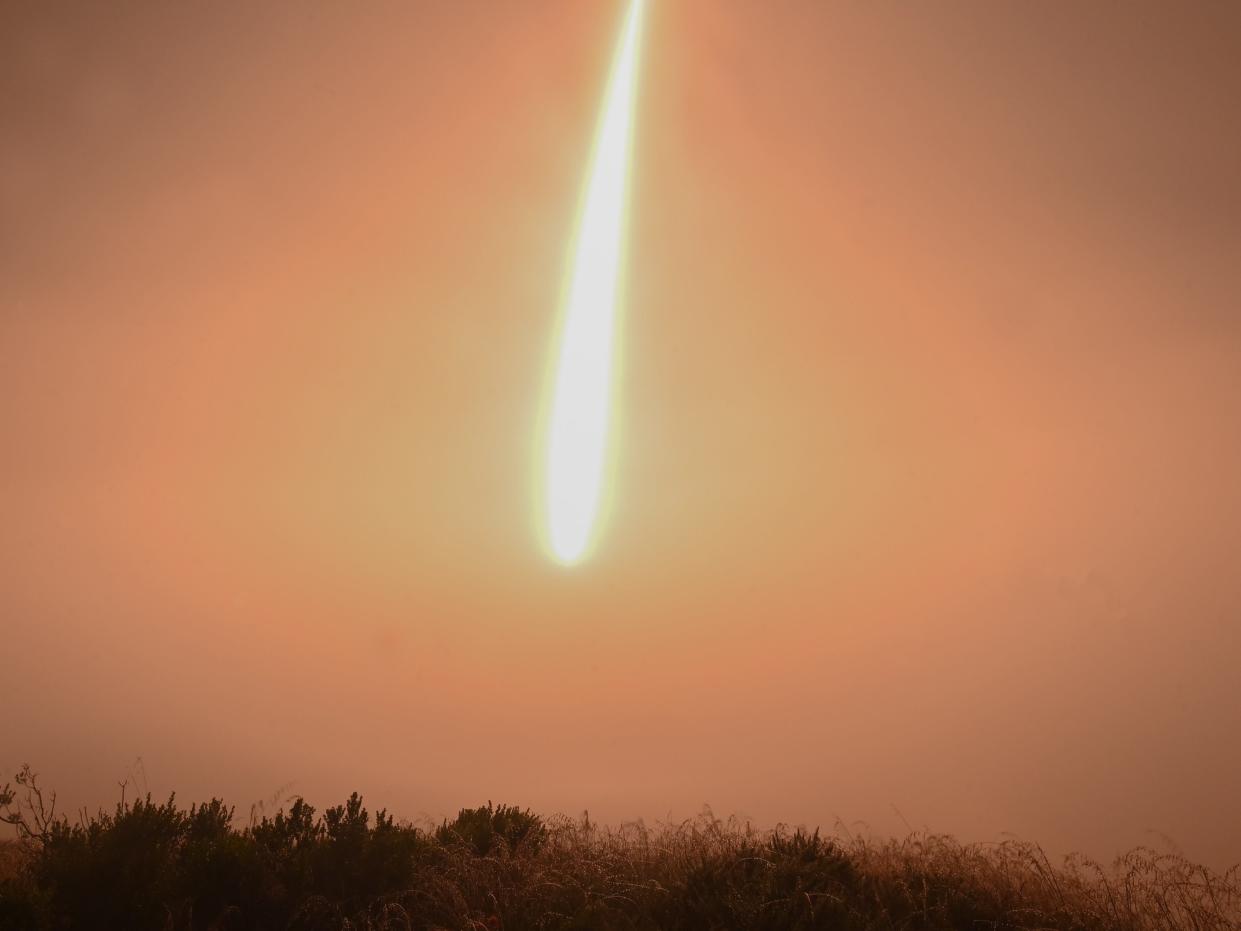The US just carried out back-to-back ICBM launches, keeping the Minuteman III sharp until a new missile comes online

The US conducted two intercontinental ballistic missile tests this week.
The missiles were unarmed and not in reaction to current world events, the Air Force said.
The Minuteman III missiles are slated to be replaced in the 2030s.
The US conducted back-to-back intercontinental ballistic missile tests this week to ensure the silo-based leg of the US nuclear triad is working as it should.
The tests of the Minuteman III demonstrate the readiness and reliability of the weapon, Air Force Global Strike Command said, as work on the next ICBM continues amid budget issues and delays.
The first missile test occurred on June 4 at 12:56am Pacific Time at Vandenberg Space Force Base in California, where "a joint team of Air Force Global Strike Command Airmen supported by Space Force Guardians launched an unarmed Minuteman III intercontinental ballistic missile equipped with one re-entry vehicle," AFGSC said.
The test, it added, was part of "routine and periodic activities" demonstrating the readiness and effectiveness of the US' nuclear deterrent. "Such tests have occurred over 300 times before, and this test is not the result of current world events," the command said.
The second test was carried out on June 6 at 1:46am Pacific Time and was also at Vandenberg.
"The fact that we were able to complete two operational test launches in one week is a testimony to the excellence and professionalism of the Airmen and Guardians who do this mission every day," said Col. Chris Cruise, 377th Test and Evaluation Group Commander. "This morning's launch demonstrates our commitment to deterrence as we serve as the cornerstone of security for our allies and partners across the globe."
In both cases, the Minuteman III traveled around 4,200 miles to the US Army Space and Missile Defense Command's Ronald Reagan Ballistic Missile Defense Test Site on the U.S. Army Garrison-Kwajalein Atoll in the Republic of the Marshall Islands.
The US military released video footage of the first and second tests online in the aftermath.
The tests helped various US departments involved in the maintenance and development of ICBMs gather data on the missiles' flights and launches, AFGSC said.
The latest tests of the Minuteman III come as the development of its successor, the LGM-35 Sentinel, continues amid growing costs and delays. In 2020, the Air Force awarded a sole-source contract to develop the missile to Northrop Grumman with a delivery date in the late 2020s and an entry into service in the 2030s.
Since then, the missile program's cost has ballooned by 37%, jumping from an estimated $95.3 billion to more than $125 billion, and it will take at least two years longer than expected. Some estimations suggest the program is now likely to cost over $131 billion. The increase is so staggering that it breached Nunn-McCurdy limits and forced US Defense Secretary Lloyd Austin to reapprove the program to keep it from being cancelled.
The rising costs and delays have been attributed to capability jumps from the Minuteman III, particularly related to launch control facilities, as well as inflation and labor issues.
The Sentinel program expects to produce 634 missiles, 450 of which will replace Minuteman III missiles. 184 will be used for tests to demonstrate system readiness, and 25 will be used for developmental test vehicles. Until the Sentinel comes online, though, the Minuteman III will continue to serve as the Air Force's ICBM.
Read the original article on Business Insider

